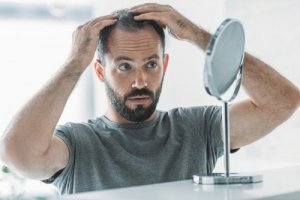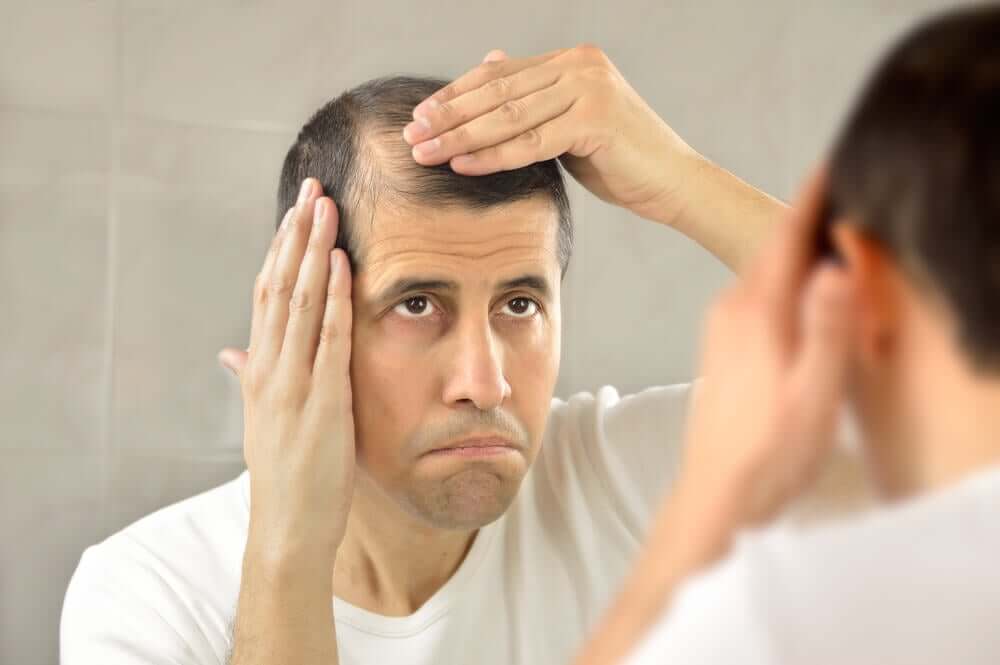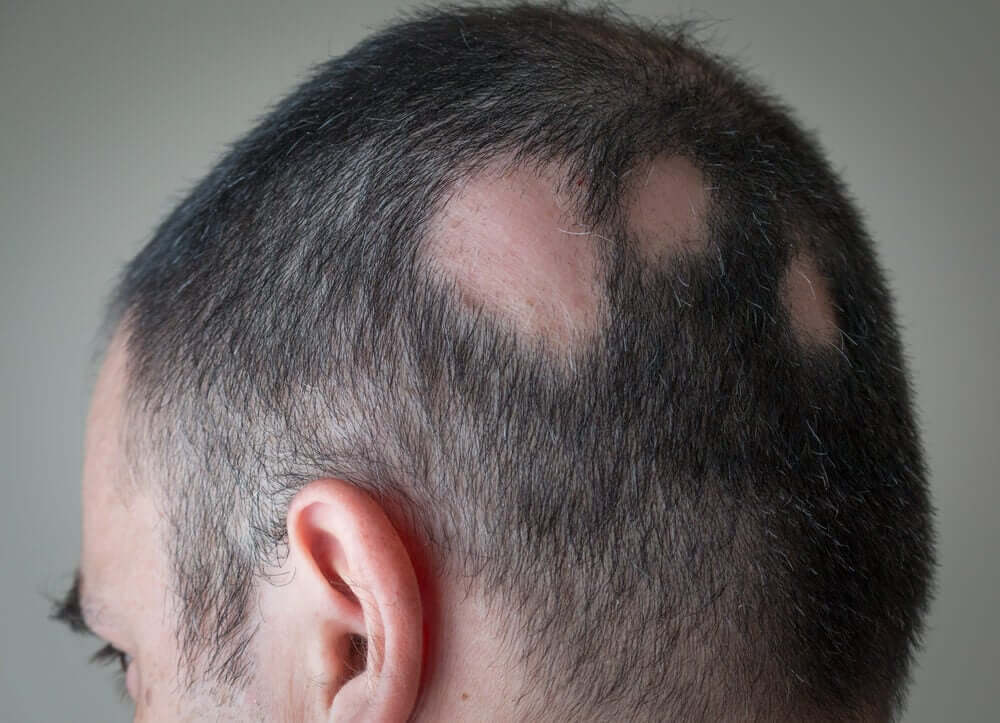Androgenic Alopecia: Symptoms, Causes and Treatment

Alopecia is abnormal hair loss triggered by various factors, including hair thinning. Androgenic alopecia, on the other hand, takes place when genetics determine these changes and also, possibly, certain hormones.
Although we call it androgenic alopecia, this type of baldness affects both men and women. It’s not the result of a disease or some other disorder, but rather it comes from hereditary factors.
It’s normal for everyone to lose hair daily, since your hair is always in constant renewal. Typically, you lose 50 to 100 hairs daily. When the loss exceeds that number, perhaps you are suffering from the process of alopecia. Over time, alopecia can lead to total baldness.
What is androgenetic alopecia?

Androgenic alopecia is the most common form of baldness among the male population. As we mentioned before, it can also affect women. In fact, some primates, such as chimpanzees and orangutans, also suffer from this type of baldness.
We might also call androgenic alopecia androgenetic alopecia or AGA. Doctors believe that it affects about 60% of men, throughout their lives, and probably 25% of women .
What distinguishes androgenic alopecia from other forms of alopecia is its cause. Genetics determine hair loss, and male and androgen hormones influence this process. Approximately 80% of men have some degree of baldness after 70 years.
Discover: Minoxidil: Treatment for Alopecia and Hair Loss
Causes of androgenic alopecia
Androgenic alopecia in men comes from genetic and hormonal causes. However, there are also cases in which it occurs without a family history of this problem. In men, the crown and upper frontal area are more sensitive to the action of male hormones (androgens) in the hair follicles.
Androgens make hair follicles grow smaller and smaller. If left untreated, they eventually disappear. Most commonly, the first symptoms of baldness appear early, between the ages of 20 and 25, in men.
In the case of female androgenetic alopecia, there’s also the genetic factor and other concomitant factors. In some cases, the process is similar to that in men. If the increase in androgens occurs before menopause, we define the alopecia as “early“. If it occurs after menopause, we classify it as “late”.
In other cases, we may associate this type of alopecia in women with other factors such as iron and vitamin deficiency, hormonal disorders, anorexia nervosa, ovarian or adrenal tumors and other diseases.
Symptoms

The most typical symptom in male androgenic alopecia is the appearance of small areas without hair, especially in the forehead and in the crown. At first, you may only notice when the hair is wet or the head is under intense light. There are seven degrees of this type of alopecia, but not all men reach the highest level.
In women, the hairless area is more noticeable in the parietal region, in other words, in the line that divides the hair in two halves. This line widens little by little. Depending on the scale taken, this alopecia has three or five degrees of progress. If left untreated, it can lead to total baldness.
Read also: Why is my hair falling out?
Treatments against androgenic alopecia
Currently, there are many treatments available for androgenic alopecia. However, none of them cure the problem forever and all offer only long-term results. In many cases, it’s necessary to maintain the treatment for life. The initial objective is slowing down the process, then increasing the capillary density to thicken the hair.
Depending on each case, you may use different types of treatment. This can be pharmacological, with dutasteride or finasteride. You may also use a topical treatment with Minoxidil or dutasteride microinjections. Also, sometimes, a doctor may do platelet-rich plasma treatment, low power laser, microneedling or prostaglandin analogs.
Sometimes doctors recommend a hair transplant, which consists of a minimally invasive surgery and with very good results. In the case of women, the same treatments are used, but the pharmacological choice is the use of antiandrogens.
All cited sources were thoroughly reviewed by our team to ensure their quality, reliability, currency, and validity. The bibliography of this article was considered reliable and of academic or scientific accuracy.
- Ho CH, Zito PM. Androgenetic Alopecia. [Updated 2019 May 18]. In: StatPearls [Internet]. Treasure Island (FL): StatPearls Publishing; 2019 Jan-. Available from: https://www.ncbi.nlm.nih.gov/books/NBK430924/
- Pindado-Ortega, C., Saceda-Corralo, D., Buendía-Castaño, D., Fernández-González, P., Moreno-Arrones, O. M., Fonda-Pascual, P., … & Vañó-Galván, S. (2018). Estudio transversal acerca de los hábitos de prescripción en alopecia androgénica de los dermatólogos en España en 2017. Actas Dermo-Sifiliográficas, 109(6), 536-542.
- Cranwell W, Sinclair R. Male Androgenetic Alopecia. [Updated 2016 Feb 29]. In: Feingold KR, Anawalt B, Boyce A, et al., editors. Endotext [Internet]. South Dartmouth (MA): MDText.com, Inc.; 2000-. Available from: https://www.ncbi.nlm.nih.gov/books/NBK278957/
- Stevens J, Khetarpal S. Platelet-rich plasma for androgenetic alopecia: A review of the literature and proposed treatment protocol. Int J Womens Dermatol. 2018;5(1):46–51. Published 2018 Sep 21. doi:10.1016/j.ijwd.2018.08.004
This text is provided for informational purposes only and does not replace consultation with a professional. If in doubt, consult your specialist.








